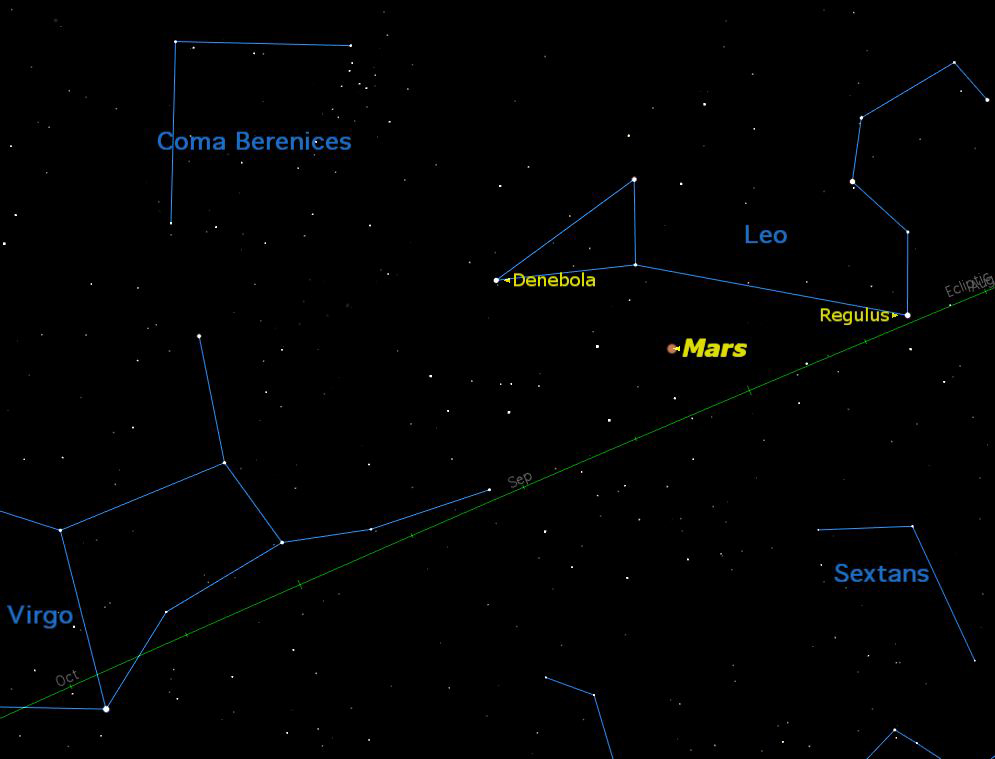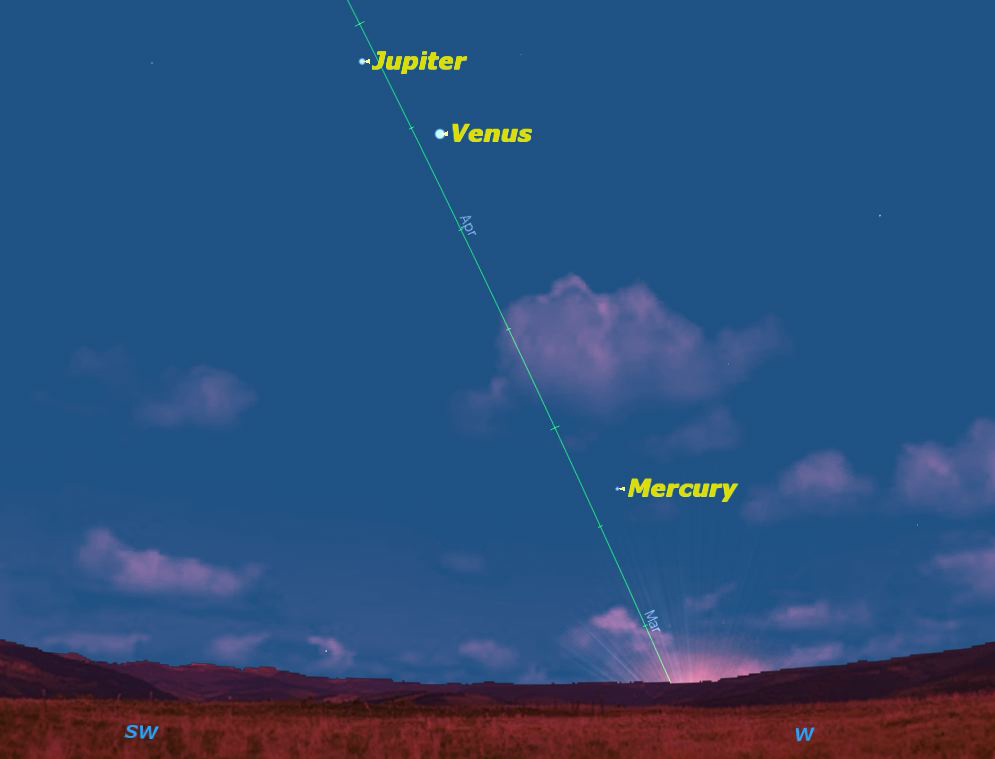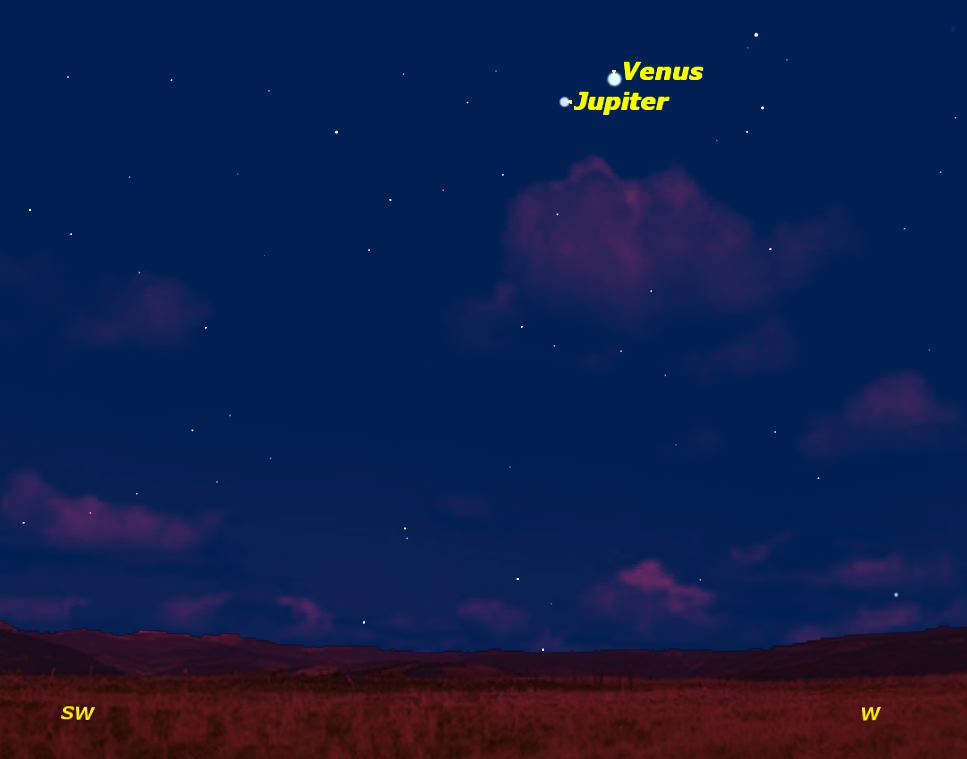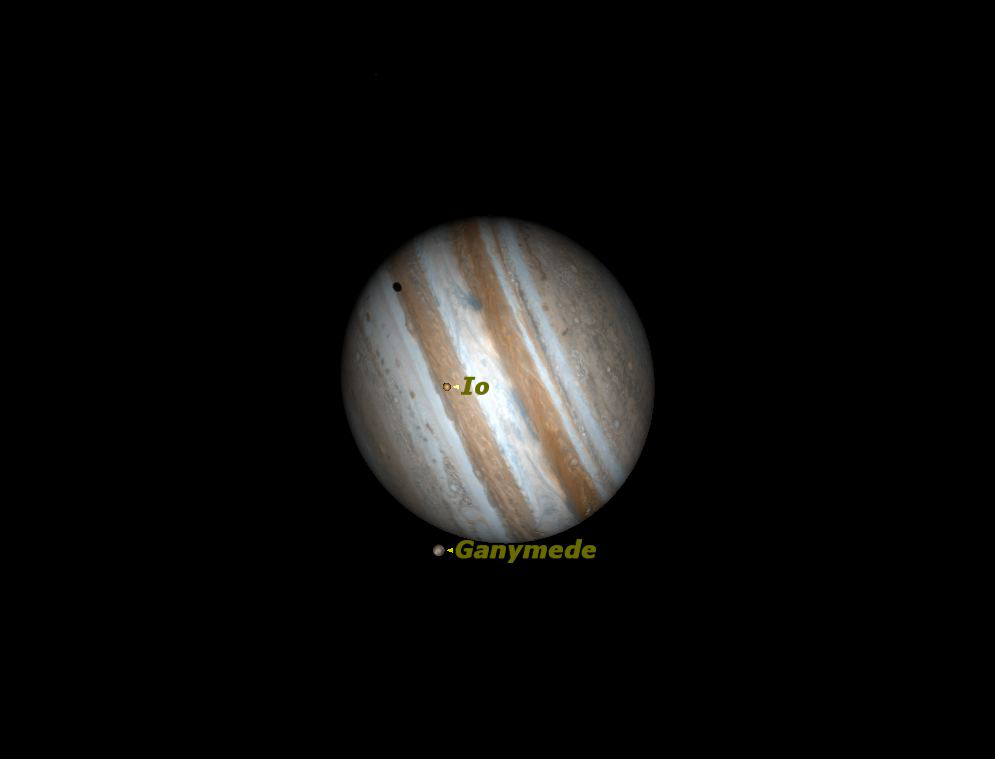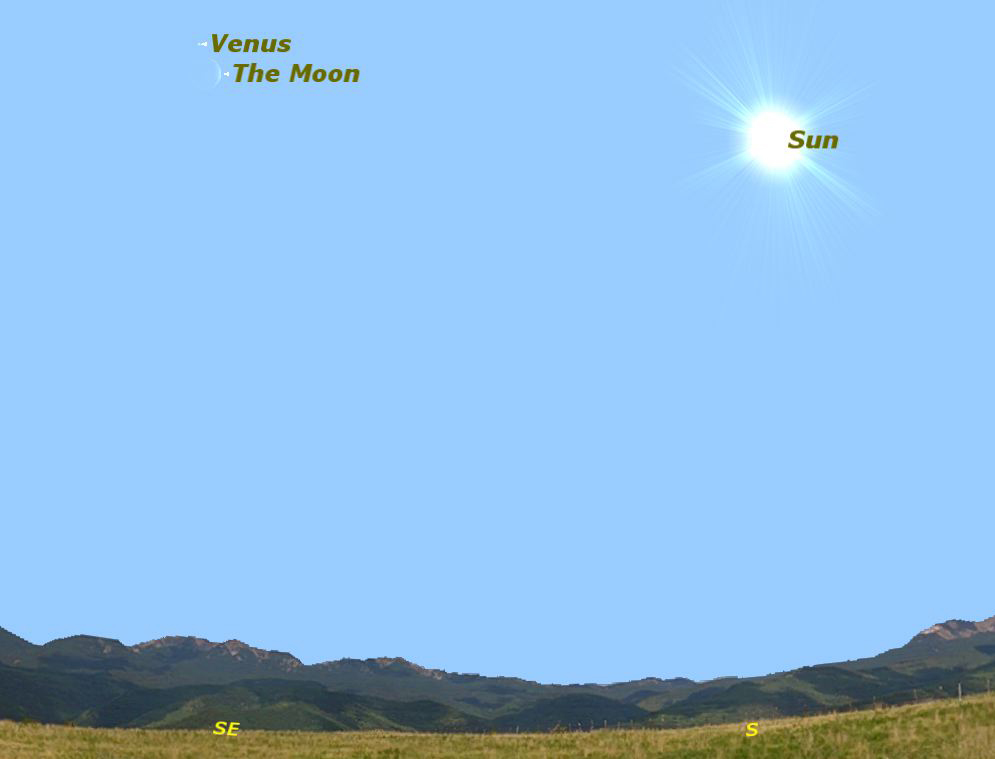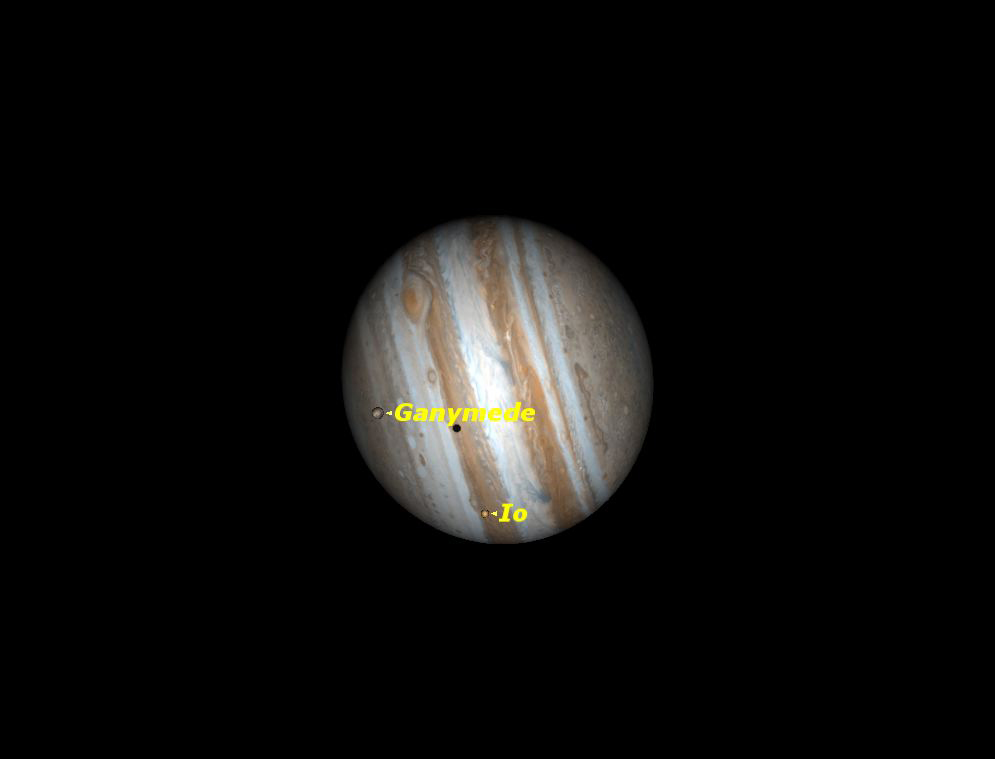Must-See Skywatching Events for March 2012
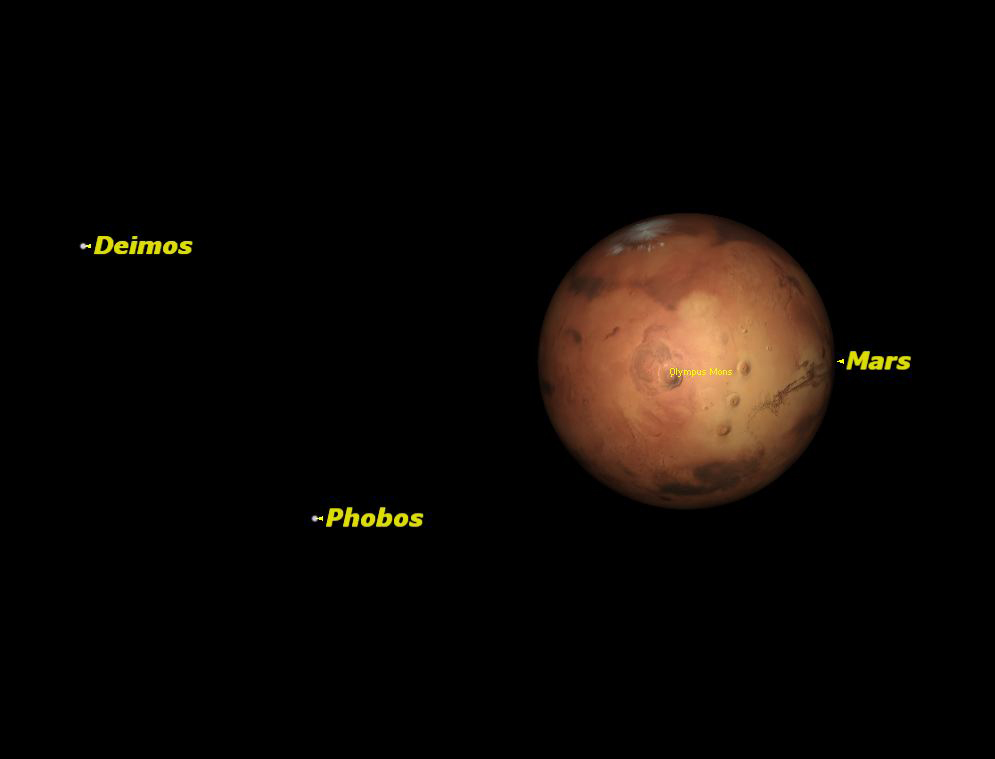
In March 2012, skywatchers can enjoy amazing views of the planets Mars, Venus and Jupiter, among a host of other dazzling amateur astronomy targets. Here's a handy guide to the bountry of skywatching targets this month:
Moon Phases
Thu., March 8, 4:39 a.m. EST
Full Moon
The Full Moon of March is usually called the Lenten Moon. In Algonquian it is called Worm Moon. Other names are Crow Moon, Crust Moon, Sugar Moon, Sap Moon, Chaste Moon, and Death Moon. In Hindi it is known as Basanta Purnima or Dol Purnima. Its Sinhala (Buddhist) name is Medin Poya. The Full Moon rises around sunset and sets around sunrise, the only night in the month when the Moon is in the sky all night long. The rest of the month, the Moon spends at least some time in the daytime sky.
Wed., March 14, 9:25 p.m. EDT
Breaking space news, the latest updates on rocket launches, skywatching events and more!
Last Quarter Moon
The Last or Third Quarter Moon rises around 2 a.m. and sets around 11 a.m. It is most easily seen just after sunrise in the southern sky.
Thu., March 22, 10:37 a.m. EDT
New Moon
The Moon is not visible on the date of New Moon because it is too close to the Sun, but can be seen low in the east as a narrow crescent a morning or two before, just before sunrise. It is visible low in the west an evening or two after New Moon.
Fri., March 30, 3:41 p.m. EDT
The First Quarter Moon rises around noon and sets around 3 a.m.
Observing Highlights
Sat., March 3, 3:00 p.m. EST
Mars at opposition
Mars will be directly opposite the Sun in the sky. It rises at sunset and sets at sunrise, visible the whole night. Because of Mars’ elliptical orbit, it will not actually be closest to Earth until nearly two days later.
Mon., March 5, noon EST
Mars closest to Earth
Mars will be 0.674 astronomical units (100,780,754 kilometers) from Earth. This is a very unfavorable apparition of Mars, Mars being about as far from Earth as is possible, close to aphelion.
Sat., March 10–Sat. March 24, evening
Zodiacal Light
The dim glow of the zodiacal light, caused by sunlight illuminating interplanetary dust, can be seen in the western sky after the end of evening twilight.
Tue, March 6, evening twilight
Mercury at greatest elongation east
Mercury will be at its best in the evening sky for the year 2012 for observers in the northern hemisphere. Jupiter and Venus ride high above it.
Tue., March 13, evening twilight
Jupiter and Venus
The two brightest planets will be only 3 degrees apart this evening.
Thu., March 22, early evening
Double satellite transit on Jupiter
In eastern North America, observers will see two of Jupiter’s moons cross Jupiter’s disk. Further west, observers will see the two moons’ shadows repeat the transit.
Mon, March 26, 2 p.m. EDT
Venus in daylight
Venus is always visible in daylight if you know exactly where to look. Today the waxing crescent Moon will be your guide: Venus will be visible just above the Moon. Venus is just a few hours shy of being at its greatest elongation from the Sun in our sky.
Thu., March 29, early evening
Double satellite transit on Jupiter
Observers in western North America will see two of Jupiter’s moons cross the planet’s face, followed by Io’s shadow and the Great Red Spot.
Planets
Mercury will be well placed as an evening “star” during the first half of March, being at greatest elongation east on March 5. This is the most favorable evening apparition of 2012.
Venus is a brilliant object in the evening sky after sunset all month, and is at greatest elongation east on March 27. The waxing crescent Moon will pass close to Venus on Mon. March 26, making it an easy target in the daytime sky.
Mars is in Leo all month, reaching its maximum size for this apparition of 14 arc seconds. By the end of the month it will already have faded from its maximum of magnitude –1.2 to magnitude –0.7. Mars rises around sunset and sets around sunrise.
Jupiter continues to shine brightly in the western sky all month in Aries, setting around 11 p.m. Jupiter and Venus are the brightest objects in the evening sky other than the Moon.
Saturn rises around 10 p.m., and is visible the rest of the night. It now shines brighter than nearby Spica.
For most of the month of March, the four brightest planets, Venus, Mars, Jupiter, and Saturn, will all be above the horizon around 9 p.m.
Uranus is too close to the Sun to observe, being in conjunction with the Sun on March 24.
Neptune is too close to the Sun to observe.

Geoff Gaherty was Space.com's Night Sky columnist and in partnership with Starry Night software and a dedicated amateur astronomer who sought to share the wonders of the night sky with the world. Based in Canada, Geoff studied mathematics and physics at McGill University and earned a Ph.D. in anthropology from the University of Toronto, all while pursuing a passion for the night sky and serving as an astronomy communicator. He credited a partial solar eclipse observed in 1946 (at age 5) and his 1957 sighting of the Comet Arend-Roland as a teenager for sparking his interest in amateur astronomy. In 2008, Geoff won the Chant Medal from the Royal Astronomical Society of Canada, an award given to a Canadian amateur astronomer in recognition of their lifetime achievements. Sadly, Geoff passed away July 7, 2016 due to complications from a kidney transplant, but his legacy continues at Starry Night.

